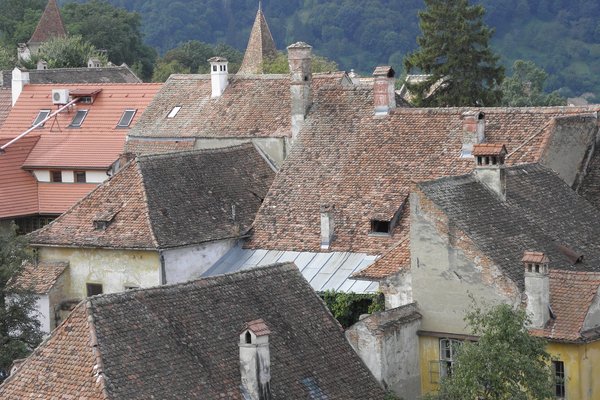Romania
Sighisoara
The Historic Centre of Sighisoara is a well-preserved small medieval city built by Saxon settlers.
The fortified city was strategically placed on a hill as protection against Tatars and other invaders from the steppes in the East. The city played an important commercial role due to its guilds of craftsmen and its position on the trade routes between Central Europe and the Ottoman Empire.
Community Perspective: the city, centering around the citadel, is easily explored on foot. The Clock Tower is considered a highlight (and Dracula’s house, if you’re into that).
Site Info
Official Information
- Full Name
- Historic Centre of Sighisoara (ID: 902)
- Country
- Romania
- Status
-
Inscribed 1999
Site history
History of Sighisoara
- 1999: Inscribed
- Inscribed
- Type
- Cultural
- Criteria
- iii
- v
Links
- UNESCO
- whc.unesco.org
- Official
-
- sighisoara.org.ro — Sighisoara city
- Related
-
- romaniatourism.com — Romania Tourism
All Links
UNESCO.org
- whc.unesco.org — whc.unesco.org/
Official Website
- sighisoara.org.ro — Sighisoara city
Related Resources
- romaniatourism.com — Romania Tourism
Community Information
- Community Category
- Urban landscape: Medieval European
- Secular structure: Civic and Public Works
Travel Information
Transylvania hotspot
Recent Connections
-
Perfect Inscriptions
1999 -
Depicted in Mizielinska Maps
Clocktower and housesSee i.pinimg.com
-
Wooden architecture
Scholars' StairsSee en.wikipedia.org
Connections of Sighisoara
- Trivia
-
-
Depicted in Mizielinska Maps
Clocktower and housesSee i.pinimg.com
-
Built or owned by Germans
Built by Saxonian settlers -
Minority communities
Sighisoara is an outstanding testimony to the culture of the Transylvanian Saxons, a culture that is coming to a close after 850 years and will continue to exist only through its architectural and urban monuments. (AB evaluation)
-
- History
-
-
Tatars
"Following incursions by the Tatars in 1241, the fortified settlement on City Hill was reinforced with walls, guarded by towers" AB
-
- Architecture
-
-
Wooden architecture
Scholars' StairsSee en.wikipedia.org
-
Gothic
two gothic churches
-
- World Heritage Process
-
-
Perfect Inscriptions
1999
-
- Religion and Belief
-
-
Legends and Folk Myths
Legend of Vlad the Impaler
-
- Human Activity
-
-
Thanatourist destination
Dracula connotations
-
- Constructions
-
-
Cemeteries
on top of City Hill -
Walled cities
-
Clock Tower
Built in the 14th century as a simple gate tower, in 1604 a wooden clock work was addedSee en.wikipedia.org
-
- WHS on Other Lists
-
-
Europa Nostra Award
Via Transilvanica (2023)
-
- Timeline
-
-
Built in the 13th century
"Criterion (iii): Sighisoara is an outstanding testimony to the culture of the Transylvanian Saxons, a culture that is coming to a close after 850 years... In the 13th century, German craftsmen and merchants, known as Saxons, were ordered by the Hungarian sovereigns to colonize Transylvania and protect the border of the Carpathians against the steppe peoples. They settled on a hill, called the City Hill" (AB)
-
- WHS Hotspots
-
-
Transylvania hotspot
95km from Sibiu / 2.5h by train
-
News
No news.
Recent Visitors
Visitors of Sighisoara
- Adolfo
- Adrian Turtschi
- Afshin Iranpour
- Albert
- Alberto Rodriguez Gutierrez
- alex
- Alexander Barabanov
- Alexander Lehmann
- Alex Marcean
- AlexSchedel
- Alikander99
- Ali Zingstra
- Aljaz
- A. Mehmet Haksever
- Ammon Watkins
- Ana
- Ana Lozano
- Andrea Szabo
- Andrew_Kerr
- Anna Wludarska
- Ansitong
- Argo
- Artur Anuszewski
- Ask Gudmundsen
- Aspasia
- Atila Ege
- Badwater
- Bamse
- BaziFettehenne
- Bill Maurmann
- Bin
- Bodil Ankerly
- Boj
- Brendan Carroll
- Bropyk
- butterflybird
- Carlos Sotelo
- Cezar Grozavu
- chenboada
- Cheryl
- chiuliqi
- Christian Wagner
- Christoph
- Cirene Moraes
- Clyde
- Cody Ayers
- Corinne Vail
- Cristina Erba
- Csaba Nováczky
- ctravel
- CugelVance
- Cyberczar
- czesioszpachelka
- Dagmara
- Daniel Chazad
- Danny L
- Dan Pettigrew
- David Berlanda
- David Marton
- DavidS
- del
- Dimitar Krastev
- Don Irwin
- Elaine McArdle
- Elia Vettorato
- Els Slots
- emvcaest
- Erfe91
- Eric Lurio
- Erik Jelinek
- Eva Kisgyorgy
- Evgenii
- Fan Yibo
- Feldhase
- Filip Murlak
- FK
- FS
- Gary Arndt
- George Gdanski
- GeorgeIng61
- Gernot
- grimloch
- Grzegorz Andruszkiewicz
- Harald T.
- Harry Mitsidis
- Hdhuntphotography
- Highlander
- hotpickle
- Hurrvinek
- Iain Jackson
- Ingrid
- Ivan Rucek
- Jakob F.
- Jakubmarin
- James Bowyer
- Janina Lehmann
- janis
- Janos
- Jan-Willem
- Jarek Pokrzywnicki
- Jasam
- Jawnbeary
- Jean Lecaillon
- Jeanne OGrady
- Jezza
- JobStopar
- Joel on the Road
- John Smaranda
- Jonas Hagung
- Jonas Kremer
- jonathanfr
- Jon Opol
- JoStof
- Joyce van Soest
- Judit Andrea Juhász
- KarenBMoore
- Ken DJ
- KentishTownRocks
- Kerékgyártó
- Knut
- ko9757
- Krijn
- Kurt Lauer
- kutasp
- La Concy
- Liamps91
- Lisu Marian
- Loic Pedras
- Luboang
- Lucas Del Puppo
- Lucio
- Luis Filipe Gaspar
- Lukasz Palczewski
- Maciej Gil
- Maja
- Malgorzata Kopczynska
- Małgosia Łupicka
- marcel staron
- MarcoB_0
- Marie
- Martin
- Martina Rúčková
- Marton Kemeny
- Mateusz
- MatusBeber
- Mihai Dascalu
- Mikan22
- Mikko
- Milan Jirasek
- Miloš Tašković
- Mtlmr
- nan
- Nihal Ege
- Patrik
- Paul Schofield
- Peltzi
- Persian Globetrotter
- petar
- Peter Lööv
- Petri Jurescu
- Philipp Leu
- Philipp Peterer
- pietprive06@kpnmail.nl
- Pincze
- Pink Bunny
- Piotr Wasil
- Potsdamer
- Rafał Kałczuga
- Ralf Regele
- Randi Thomsen
- Remigiusz
- Reza
- Riccardo Quaranta
- RobRos
- Roccobot
- Roger Enarsson
- Roger Ourset
- Roman Bruehwiler
- Roman Raab
- Rosemary
- Schnitzel
- Sclowitz
- Sergio Arjona
- Shandos Cleaver
- Shijie ZHU
- shoaibmnagi
- Simonf
- Slavi
- sncjob
- Solivagant
- Stanislaw Warwas
- stephhollett
- Svein Elias
- Szabo Viktoria
- Szucs Tamas
- Tamara Ratz
- Taotao Chen
- Tarquinio_Superbo
- Tatiana Nikulnikova
- Tcchang0825
- Tevity
- Thomas Buechler
- Thomas van der Walt
- Timonator
- Timothy C Easton
- triath
- Tsunami
- Twobaconsandaboston
- voyager
- WalGra
- Waxwing
- Westwards
- Wojciech Fedoruk
- Yevhen Ivanovych
- zfish
- Zoë Sheng
Community Reviews
Show full reviews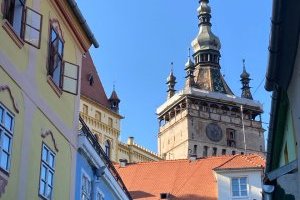
August 2024 - it was one of the hottest days during our trip. Luckily we found a camping spot at the local Swimmingpool which was included in the fee and seems to be the only spot to cool down in this town. In the evening it became more bearable for a stroll through the old town. It is definitely a wonderful old town, but also too much of a tourist place loaded with souvenir shops and italian-style restaurants. I regret not visting the old town next morning again, without the tourist masses. Summing up, I expected a bit more of this one, but it was a nice visit.
Keep reading 0 comments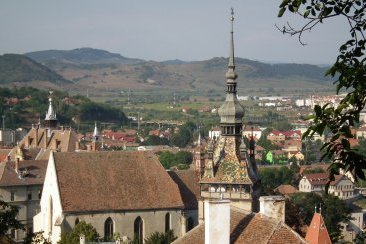
Sighisoara is one of those medieval towns that has you head scratching about it's inclusion as a WHS where many more impressive medieval towns fail. I can think of many in France and Italy that are more impressive but fail to get a listing.It's nice and it's worth the trip, especially if you are interested in the history of Vlad the Impaler, as he was born in a large yellow house (a restaurant when I visited in 2012) in the pretty main square.There are lots of little cobbled alleyways and typical Saxon buildings but it is quite small compared to many other similar cities (Bruges or Riga for example).Combine the visit with a few of the fortified churches, as I did, and it really is worth the journey.
Keep reading 0 comments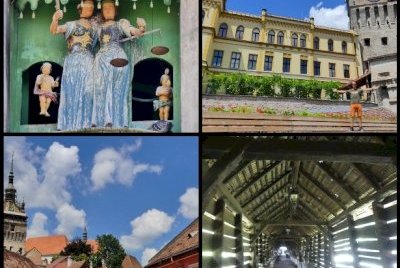
I visited this WHS as a day trip from Sibiu. When planning my road trip in Romania I was undecided whether to use Sighisoara or Sibiu as my base for the surrounding WHS and tWHS. I opted for the latter mostly because the hotel included private parking, but overall I must say it was a very fortunate choice. I really enjoyed Sibiu not only for its many attractions but also because it really is a lively and liveable city. In contrast, I found Sighisoara to be too much of a museum city geared solely at tourism.
There is a convenient paid outdoor parking just below the uphill pedestrian street or stairs leading up to the Sighisoara clock tower area. I really enjoyed the area further up which is reached through the covered wooden Scholars' stairway and leads to some of the eight towers (such as the Tailors' Tower, the Bootmakers' Tower, and the Tinsmiths' Tower) which form part of the Medieval fortifications of Sighisoara and to the pretty Church on the Hill from where there are panoramic views of the surrounding hills and the fortified city below. I skipped the Dracula house interior, which was by far the most busy place in town with tourist train tours transporting groups around Sighisoara before or after an "obligatory" stop there, just a few steps away from the much more impressive Stag House. Instead of the crumbling Clock Tower, my personal highlight in Sighisoara were the different houses scattered around town, such …
Keep reading 0 comments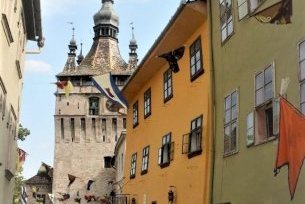
Sighișoara is a small Medieval fortified city, home to an array of churches, townhouses, and defensive works. The Clock Tower is the iconic structure of the city, guarding the main entrance to the citadel. There are a further eight towers that guard the walls of the citadel, each named after the guild of Saxon craftsmen that paid for its construction: Butchers, Bootmakers, Furriers, Ironsmiths, Ropemakers, Tailors, Tanners, and Tinsmiths. Biserica din Deal, the Church on the Hill, is the largest of the churches and its hilltop location offers a great view over the rest of the city with its Medieval core and surrounding suburbs along the banks of the River Târnava Mare. There is a wonderful wooden covered staircase that links the church and adjoining old schoolhouse with the citadel below. The core zone is restricted to the citadel and its immediate surroundings although there are a few good sights beyond, including a 20th Century Byzantine-inspired Orthodox church on the north bank of the river. Beyond the city, the countryside of Mureș, Brașov, and Sibiu counties contains some delightful villages and natural landscapes, including another World Heritage Site in the fortified churches of Biertan, Viscri, and so on.
However, the site that seems to attract the most tourist attention is one yellow house in particular that claims to have been home to Vlad II and Vlad III, father and son who ruled over Wallachia in the 15th Century. Caught between the two great powers of the Kingdom of Hungary …
Keep reading 0 comments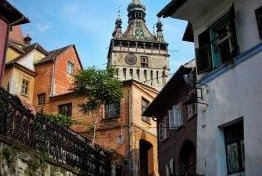
In the 12th century, King Géza II of Hungary invited German craftsmen and merchants, generally known as Transylvanian Saxons, to settle in Transylvania, at the time part of the Kingdom of Hungary, to defend the frontier of the realm. Among the first settlements founded by the Saxons was the town that is now known as Sighișoara (Schäßburg in German).
Later on, during the Mongol Invasion (mid 13th century), many Transylvanian towns were fortified in order to be protected. Seven of the main fortified cities were particularly important and, because of these seven city, Transylvania was called Siebenbürgen in German or Septem Castra in Latin, that literally mean Seven Fortresses. Sighișoara was one of them and played an important role, both military and commercial, in the border region between central and south-eastern Europe.
The Historic Centre of Sighișoara is inscribed in the UNESCO World Heritage list since 1999. The city can be reached easily from any major city in Transylvania by bus or train. I personally went to Sighișoara on a day trip by train from Brașov.
The best way to visit the historic centre of Sighișoara is on foot. The citadel is small and with good weather it is very pleasant to walk along the narrow streets and stop at one of the many cafés for a drink. The citadel is in incredible conditions. It looks and feels as if it still is a medieval town, except for the few cars parked here and there.
At the end of one …
Keep reading 0 comments
The citadel of Sighisoara compares well with other medieval hilltop towns. Surrounded by defensive walls and towers its colourful streets and squares are full of interest. The covered bridge to the summit is of interest, but the views from the pathway were spectacular.
The town's association with Vlad Dracul (Vlad the Impaler) is another drawcard.
Keep reading 0 comments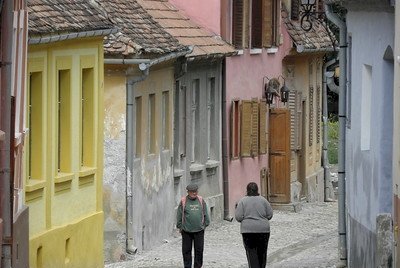
The author of the Bradt Guide for Transylvania goes on and on in her praise for Sighisoara: “… like taking a trip back in time, to an era crowded with vampires, evil counts, wolves, peasants riding through the untamed countryside on horse-drawn carts and tipsy old men tottering along the narrow, winding streets”.
After having visited the site myself, my conclusion is that she must have been living under a stone all her life, or just spent too many years in Romania. It’s a nice town to visit for half a day, but is it any better than a similar medieval city WHS? San Marino (much bigger and more spectacular location), Assisi, or Toledo (both more impressive individual structures) come to my mind. Only these cities were not on the route between Central Europe and the Ottoman Empire… (a regional aspect is what distinguishes it the most).
What I liked best about Sighisoara was the long-covered wooden staircase that leads up to the very top of the hill. It was built to cover schoolchildren and churchgoers from the rain. It reminded me of a similar one at Biertan Church that I visited earlier that day.
Keep reading 0 comments
